
If you’re a concealed carrier and have a partner, you could both likely benefit from practicing more effective communication in high-stress environments.
Being an effective concealed carrier or home defender takes more than putting a gun on every day and regular range time. Yes, physical fitness, incorporating less-lethal tools or learning hand-to-hand techniques can be part of the formula.
Still, there’s one aspect to being a good defender that’s missing: communication.
Communication is hard; anyone in a relationship will know that all too well. If you’re not great at talking about your thoughts, feelings or your day at work, that’s OK—that isn’t the kind of communication we’re talking about here.
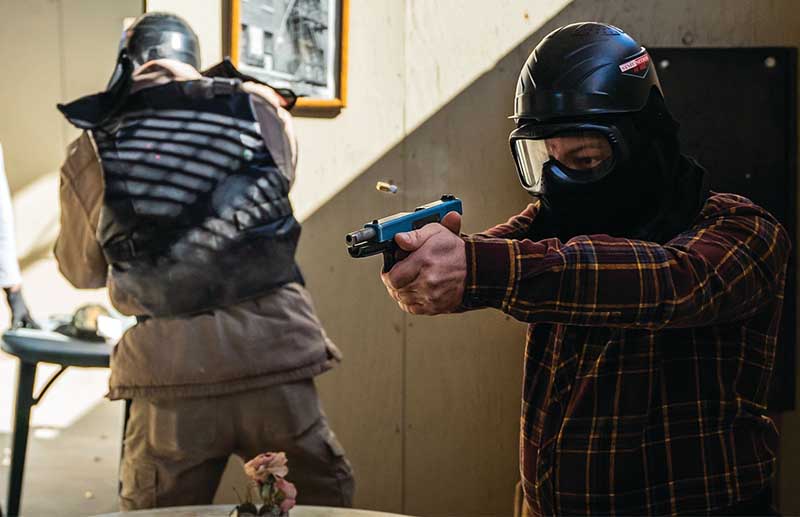
Effective communication between a defender and the ones you care about is essential to surviving a violent encounter.
While that might seem obvious, it isn’t as easy to do when the stakes are high. Simple things like who enters a room first or a code for “we need to go right now” should be established before things get weird.
How To Practice Communicating
There are hundreds of drills to help you become a more proficient shooter, but drills to improve effective communication are far less common. About as close as you’ll get is having a partner call out colors, shapes or numbers on a target array, but that doesn’t work on the hard stuff.
A far more effective means of honing your communication skills is establishing a plan for scenarios such as a home invasion, an active shooter and others you identify as essential to discuss. Keeping those most precious to you should be the goal when planning; you aren’t Jack Bauer clearing a structure by yourself.
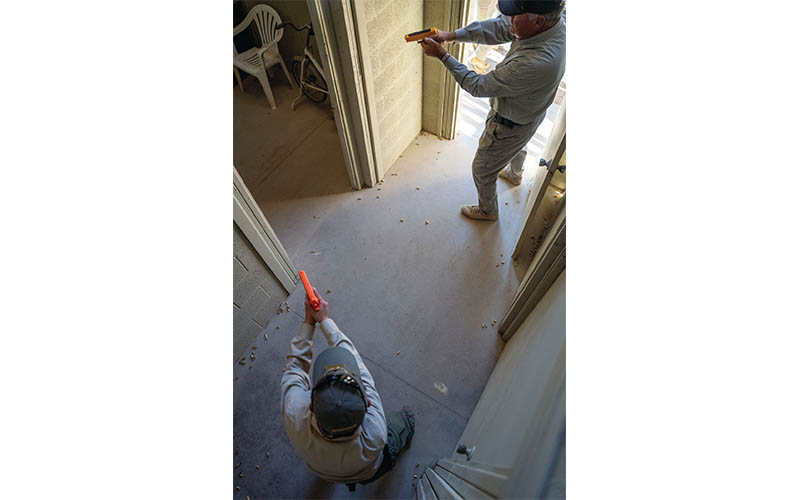
Example: Someone breaks into your home at night; you and your family have planned this out. Your spouse calls 911 and tells the police what they need to know while retrieving your pistol from the bedside safe. As your spouse is talking to the police, they move to an easy-to-defend room, like a walk-in closet, and you get to the children and get them into that defendable room. Consolidating your family and taking a defensive position means that you likely will be able to hold out until help arrives safely. Things are replaceable; your family isn’t.
Talk to the ones you love and establish a plan; when it counts, you’ll have a fighting chance to keep everyone safe.
Code Words
Part of having a plan is establishing a handful of phrases that no one outside your trusted circle understands. A phrase that means “get out now” or “take cover” is a simple and effective means of communicating something urgent. Word to the wise: Don’t use your get-out-now code to leave your spouse’s work party early; they won’t believe you when you’re faced with something more dangerous than a coworker who has had too many.
I recently got a chance to see precisely how useful code words can be during a shoot-house training session. Another class member was taken hostage and his partner, Gunsite Instructor Mario Marchman, had already drawn his blue gun. As everyone was shouting at each other, Mario said, “We are gonna figure this out, Mario.” On cue, the hostage dropped like a sack of bricks.

You see, the pair had worked out before that if they used their name to refer to the other, that was the signal to engage the wet-noodle defense. That slick little maneuver would’ve likely saved the hostage’s life.
Situation 1
What Would You Do: Holiday Invader
It’s the holidays, and your sister-in-law flew in to spend Christmas with your family. You, your spouse, and your two kids leave to finish some last-minute shopping, but Auntie J needs a bit of rest after a 12-hour flight from Ireland.
The shopping is finished and you drive the clan home to collect Auntie J for a dinner downtown. As you pull up, you notice the front door is wide open and you don’t see anyone, but you hear yelling inside.
What do you do?
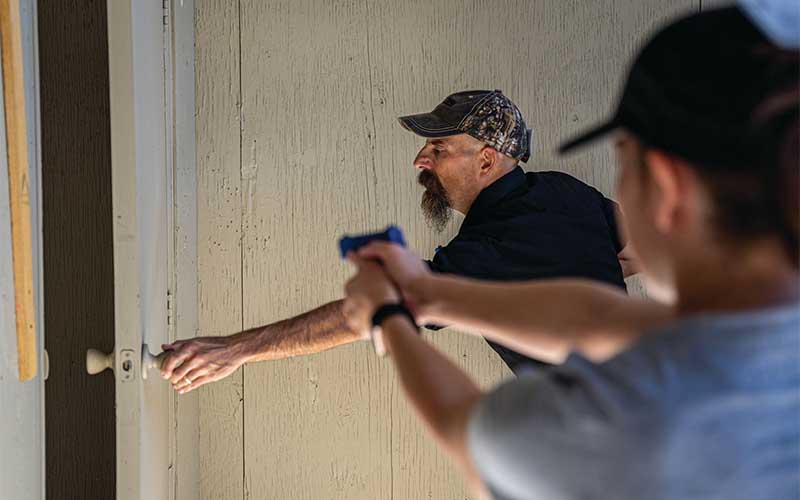
My Take
Calling 911 and waiting on police might be a bad call with someone yelling inside. You and your spouse are both carrying; she calls 911 before you enter, making sure to give the dispatcher crucial information, such as the address and that you’re both legally armed. Your oldest stays on the phone with police and takes the youngest to the neighbor’s.
Sticking to your plan, you both enter the house and clear your way toward the yelling. You reach the yelling and your spouse turns the doorknob, flinging the door open. Auntie has been backed into a corner by a strange man holding a knife who turns toward you as the door hits the wall.
The intruder looks down and sees the gun pointed at his chest, his eyes widen and he drops the knife as his hands fly up in surrender.
Equip Yourself For Success
If you’re new to firearms training, taking some local classes is a great start and will help you get the most out of the block of instruction. The next step is to step up the quality of firearm instruction by either seeking out a traveling instruction passing through your area or making the trek to an established training facility.
Even if you have to take a team-based course by your lonesome, you get some really great information that you can bring back home and share with those you love. Most of the tasks covered might seem simple on the surface, but learning how to move together when getting clear of a threat is far more difficult than you might imagine.
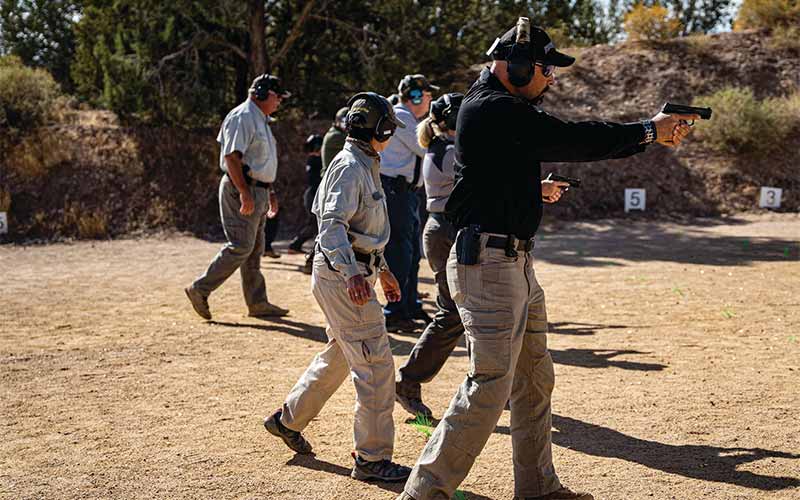
Even if you and your family have a good grasp on the basics, there’s no shortage of good info to be had; you might even discover a new technique that’s more efficient or tactically sound than what you’re currently doing.
Situation 2
What Would You Do: Meal and a Murder
You’re out to lunch with a gun-loving coworker at a little place near the office. You’re both enjoying your meals while talking about what you each have planned for the weekend. He’s planning on taking his son out to the lease for the first time, and you tell him about the USPSA match you’re registered in. You notice that the host is talking to a very angry man; they seem to know each other so you aren’t too alarmed.
Assuming that his reservation must’ve been lost, you go back to your conversation until you hear the man yell, “You knew she was married!” Both you and your coworker turn your attention to the angry man just in time to see him level a pistol at the host. You hear a gunshot; the host slumps to the floor.
What do you do?
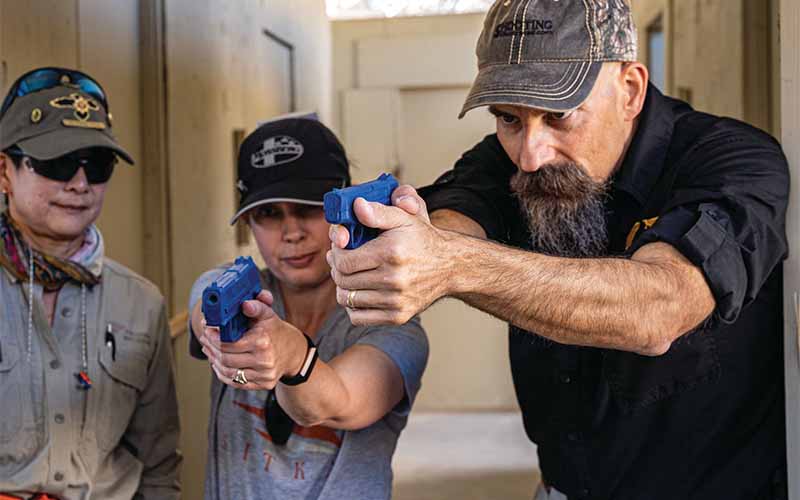
My Take
A quick look around the restaurant makes your heart sink as you notice that there isn’t any way to get out of the building and to safety without being seen. You discretely draw your firearm and wait for the right moment—if the shooter doesn’t leave on his own, you might have to defend yourself in the blink of an eye.
A few tense seconds pass and you see the shooter start to swing the gun toward the rest of the patrons, and then directly at you. There’s no choice now; you place your sights a few inches below the base of his neck and pull the trigger once … twice … the shooter releases his grasp on the pistol and clutches his chest. He collapses to the floor, making no movement toward his pistol. As soon as you feel it’s safe, you and your coworker get out and call 911.
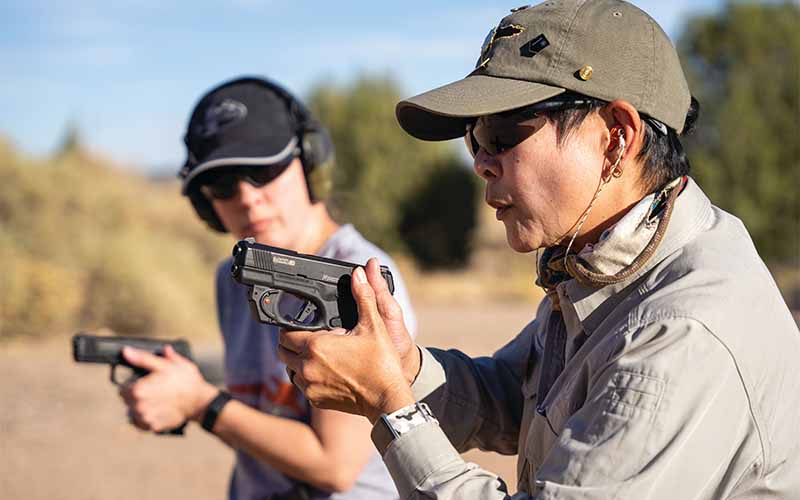
Simunitions Teach Hard Lessons
The flat range can only teach you so much. When you start incorporating things like blue guns and Simunitions, you add a while new dimension to your training experience. Blue guns have their place when doing dry runs, but there’s something unforgettable about running a scenario with Sim guns.
Beyond the obvious benefit of being able to safely pull the trigger with another human being in your sights; getting hit with one of those plastic bullets ensures that you don’t forget what you could’ve done better. Adding in the stress of a force-on-force component is an effective way to pressure test what you learned in a class.

Practice Makes Perfect
The phrase, “Communication is the key to a happy and long life,” means a lot more than just talking to your spouse. Make a plan, stick to it and do dry runs often. The better you and those you surround yourself are equipped to deal with the unthinkable, the more likely you are to come out of your worst day with everyone you love intact.
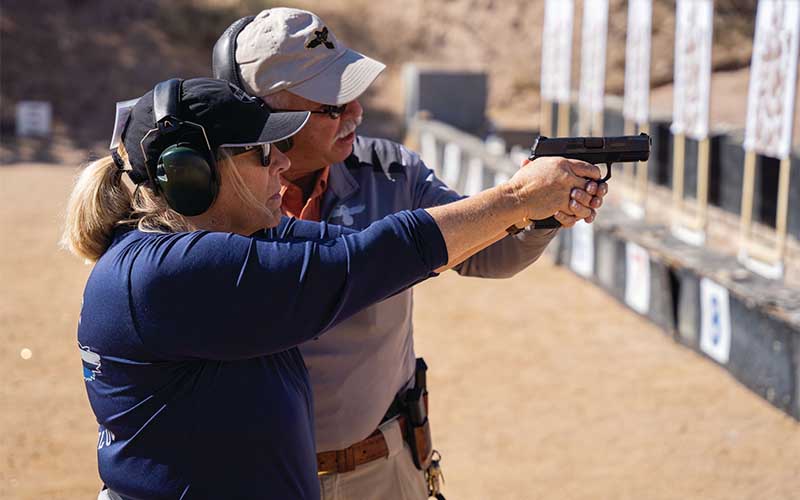
Most importantly, sign up for some training; every gun owner should make the pilgrimage to Jeff Cooper’s stomping grounds at least once in their lifetime. I bet that when you take that first class, you’ll be looking for what to take next before the course is even over.
Editor's Note: This article originally appeared in the 2021 CCW special issue of Gun Digest the Magazine.
More Skills For Concealed Carriers:
- 6 Defensive Handgun Drills to Master
- The Shot Timer And Defensive Handgun Training
- Dry Fire Training To Improve Defensive Handgun Skills
- Aiming A Defensive Handgun, Is There One Right Way?
- 7 Steps To Control Fear And Make Sound Decisions Under Stress

Next Step: Get your FREE Printable Target Pack
Enhance your shooting precision with our 62 MOA Targets, perfect for rifles and handguns. Crafted in collaboration with Storm Tactical for accuracy and versatility.
Subscribe to the Gun Digest email newsletter and get your downloadable target pack sent straight to your inbox. Stay updated with the latest firearms info in the industry.

![Best Concealed Carry Guns In 2025 [Field Tested] Wilson Combat EDC X9S 1](https://gundigest.com/wp-content/uploads/Wilson-Combat-EDC-X9S-1-324x160.jpg)


![Best 9mm Carbine: Affordable PCCs [Tested] Ruger Carbine Shooting](https://gundigest.com/wp-content/uploads/Ruger-Carbine-Shooting-100x70.jpg)
![Best AR-15: Top Options Available Today [Field Tested] Harrington and Richardson PSA XM177E2 feature](https://gundigest.com/wp-content/uploads/Harrington-and-Richardson-PSA-XM177E2-feature-100x70.jpg)
